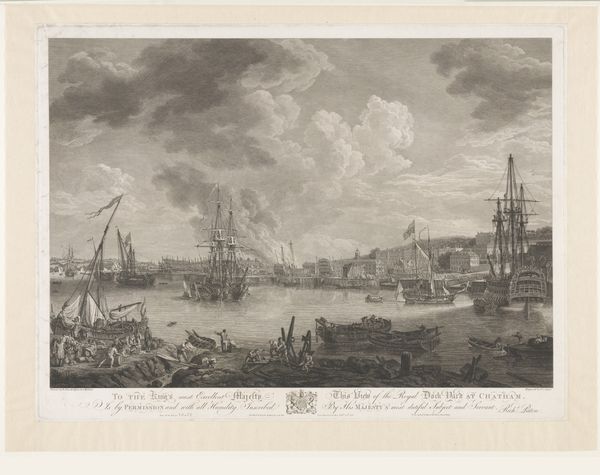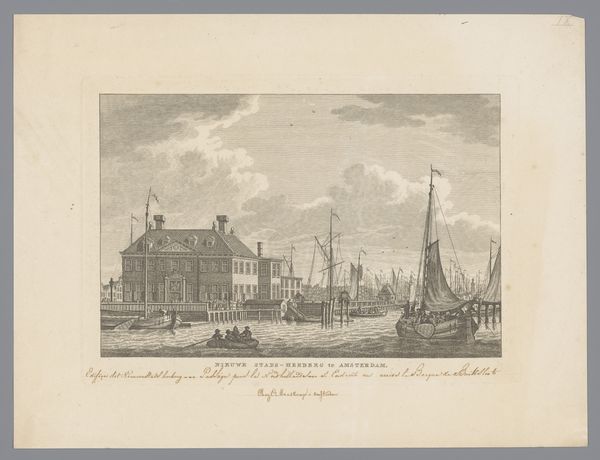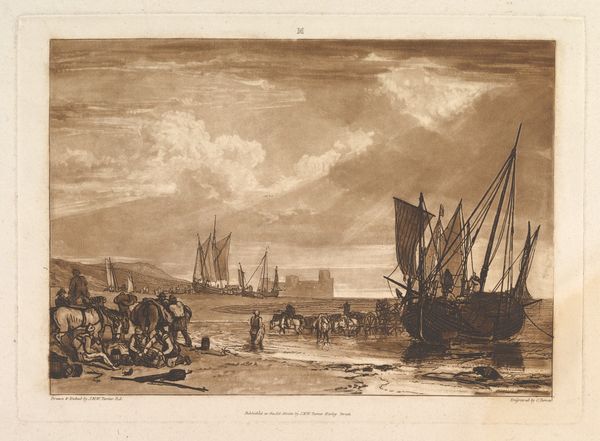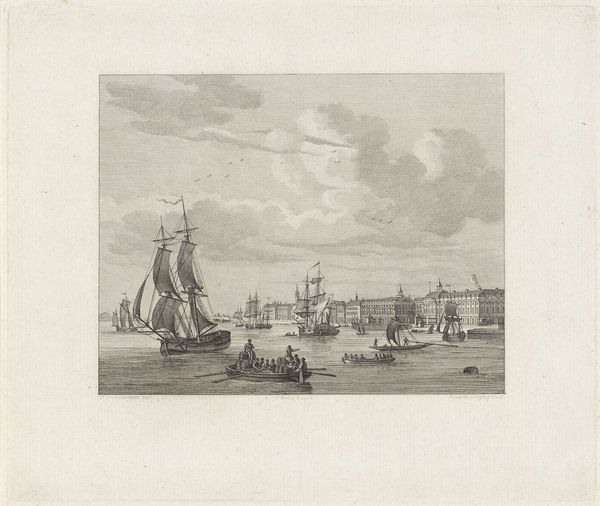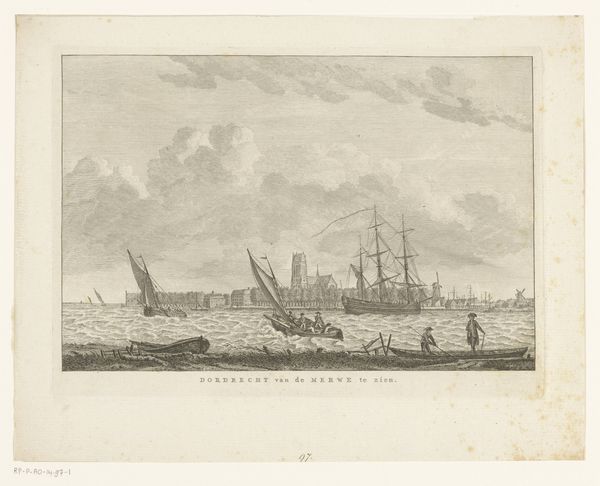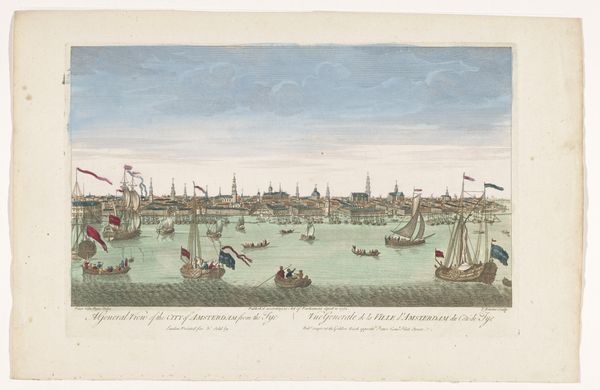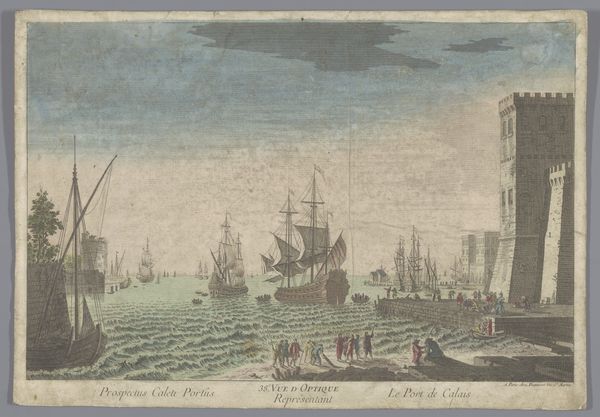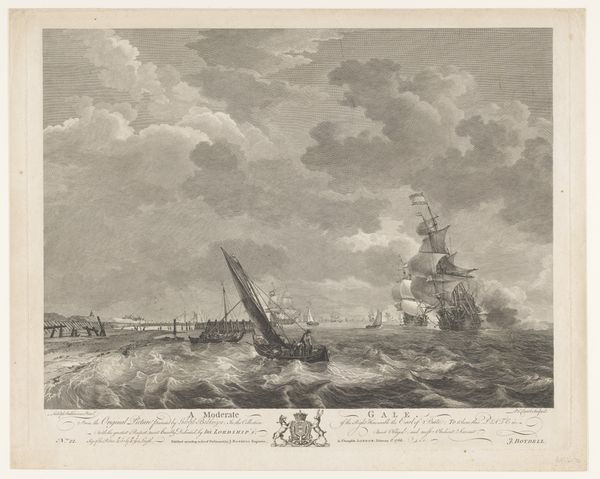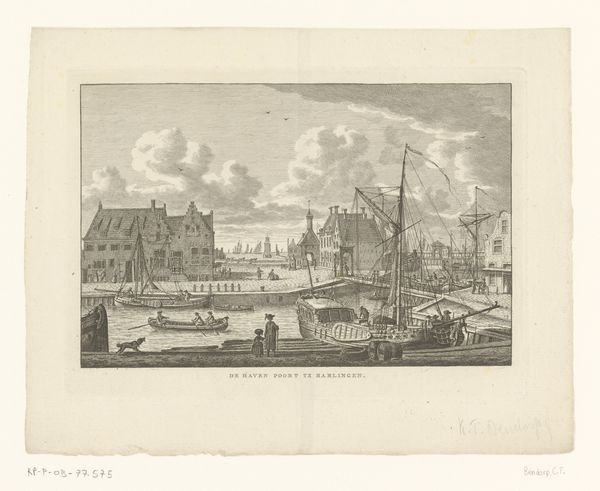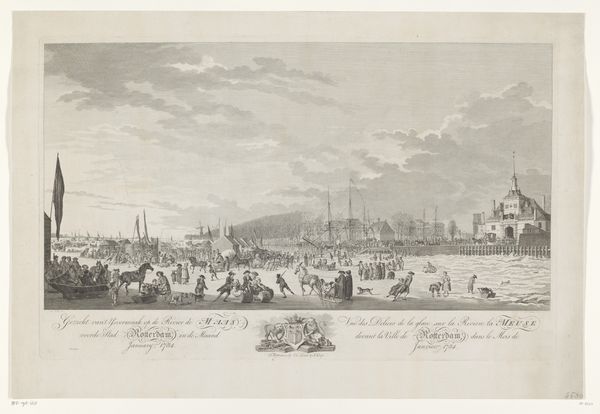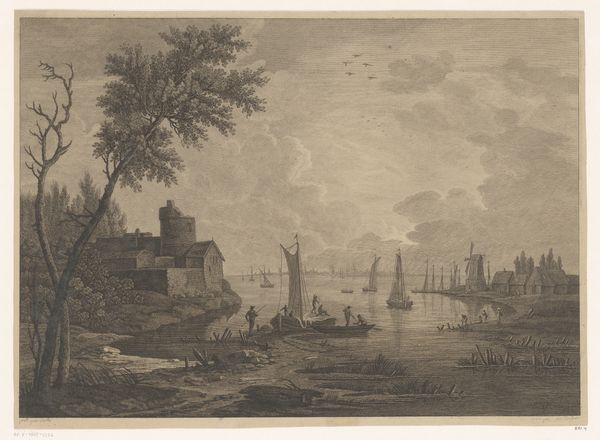
Dimensions: height 501 mm, width 676 mm
Copyright: Rijks Museum: Open Domain
Editor: This is "View of the Deptford Dockyard," an engraving from 1775 by William Woollett, at the Rijksmuseum. The scene has such a grand, industrious feel, with ships dominating the water and lots of figures busily at work. How do you interpret this portrayal of Deptford, especially considering its time? Curator: It’s easy to get caught up in the sheer impressiveness of it all, isn’t it? But I think it's vital to look closer at the social landscape embedded within this supposedly neutral portrayal of industry. This print was produced on the eve of the American Revolution. Consider the ships under construction: they represent Britain's expanding imperial power. What is being built here? War machines. For what? Exploitation. And who benefits from this display of industrial prowess? Certainly not the working class whose labor makes it all possible. It's a top-down representation. Editor: I see your point. I was impressed by the technical skill, the detail in the ships and the architecture. Is this perhaps idealizing a system that depends on oppression? Curator: Precisely. It's a glorification of power under the guise of representing "progress". Ask yourself: whose narrative is being amplified here, and at whose expense? Also consider this area of London, Deptford was central to early voyages of enslavement, do we see any reflection on that? No. This work offers an important case study into the ethics of representation during a time of immense social change, both in Britain and its colonies. Editor: That reframes my perspective quite a bit. I initially saw a depiction of productivity, but it's impossible to separate that from the era's power dynamics. Thanks, that’s something I’ll take with me as I look at more art. Curator: It’s about engaging critically. Art isn’t neutral; it’s a reflection, and often a reinforcement, of social ideologies. Let's always ask what’s happening beyond the aesthetic surface.
Comments
No comments
Be the first to comment and join the conversation on the ultimate creative platform.
